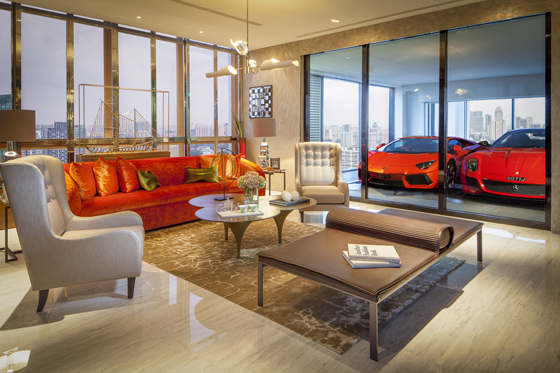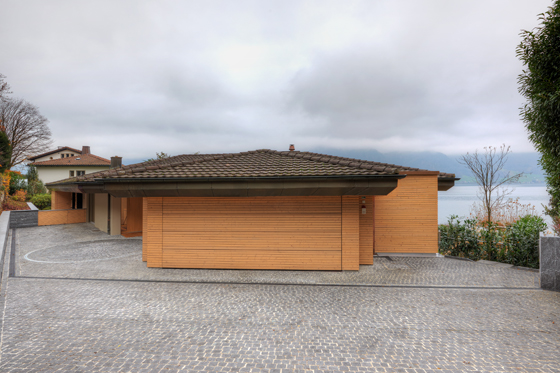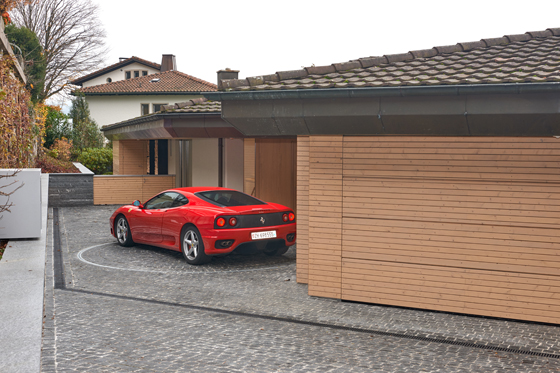Parking Systems by Wöhr
Storia del Marchio di Ulrich Büttner
Friolzheim, Germania
27.01.15
When the first ‘modern automobile’ was introduced to the world, it was the year 1886. The ultramodern horseless vehicle would remain the exception for a number of years, and parking problems were unknown, and still a long way off. Wöhr was founded in 1902, just 16 years later – albeit as an ordinary metalworking shop and not as an originator or planner of parking systems.
The Parksafe 582 vertical lift serves two parking grids, each with up to 30 levels arranged as a tower. Ramps and traffic aisles are superfluous
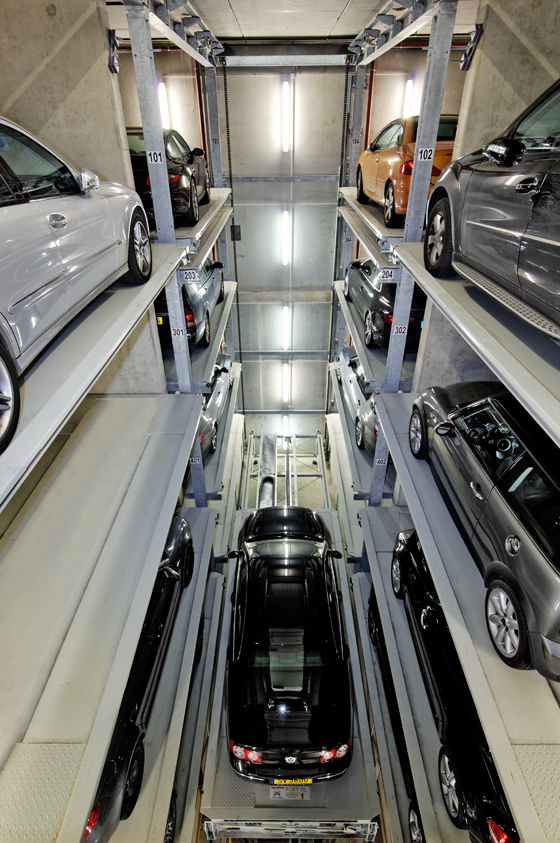
The Parksafe 582 vertical lift serves two parking grids, each with up to 30 levels arranged as a tower. Ramps and traffic aisles are superfluous
×But the passage of time has brought with it rapid changes in the use of automobiles – above all a steady increase in car registrations that continues unbroken to this day, not only in Germany. Amazingly, Wöhr brought the first car parking system onto the market as early as 1959, at a time when the market was still fairly small in size. Today, the company from Friolzheim offers one of the largest ranges of proprietary products in the world.
As long as only one car is parked in, or in front of, the garage of each single-family house, there are no parking problems. The situation is different, though, if a parking space has to be provided for each dwelling in a multifamily house or an apartment complex. And if two parking spaces per dwelling unit are required – which is relatively common nowadays – then parking can pose a real problem. The high prices for building sites make it necessary to utilize the purchased land efficiently, which essentially precludes regular parking spaces. The underground parking garages that have been built for decades not only add greatly to the overall costs of construction, but for the most part no longer even provide enough capacity.
In cities, the shortage of parking quickly became apparent, prompting a reappraisal of densified housing and, consequently, the space consumed by parked vehicles. Otto Wöhr GmbH’s slogan – ‘We compact parking space’ – is a concise and accurate description of the company’s successful business concept. In essence, the solution is to maximise the utilisation of parking space volume by moving vehicles much closer together and stacking them. This is where the flawless functionality and the reliability of the parking systems play a decisive role. It is no accident that Wöhr is the leading provider in this sector, and has been for decades. The experience acquired from installing nearly half a million parking spaces worldwide over more than 50 years continues to grow day by day. Around 10,000 parking spaces are delivered each year, yet despite the systematic structure and all the proven technology, each installation is a ‘custom-tailored product’. The conditions encountered on site are rarely similar, let alone identical. The high-capacity systems are selected, customised and optimised to meet project needs in close collaboration between Wöhr engineers and local architects and planners. This ranges from a one-to-one meeting before a comparatively simple Parklift system is selected, to a large planning session to discuss the benefits, costs and structural requirements for a Multiparker system that can handle up to several hundred parking spaces.
The residential tower in Singapore features two parking spaces for each of the 54 apartments and four parking spaces for each of the two penthouses
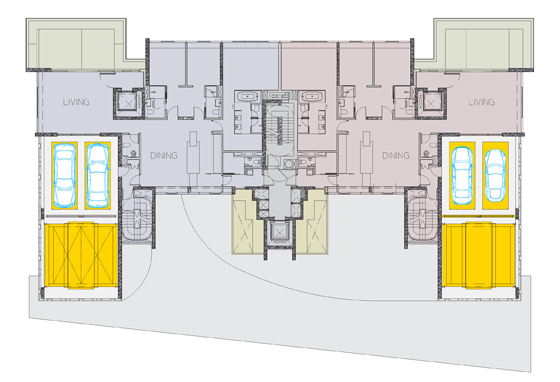
The residential tower in Singapore features two parking spaces for each of the 54 apartments and four parking spaces for each of the two penthouses
×wo separate ‘Multiparker 720’ systems accommodate all 116 vehicles, which are parked at the same level as each apartment. Entry and exit is at level -1

wo separate ‘Multiparker 720’ systems accommodate all 116 vehicles, which are parked at the same level as each apartment. Entry and exit is at level -1
×Specific parking space and spatial requirements are decisive criteria. Is it, for example, necessary to accommodate many vehicles within a limited area, or is there enough floor space but limited headroom? If neither is sufficiently available, the solution may be to expand downwards. The diversity of systems makes it possible to provide individualised solutions, from dual Parklifts for two stacked cars to modern parking towers or automatic parking systems consisting of a high-bay warehouse for several hundred cars. Vertical lifts replace ramps, and sliding mechanics obviate conventional parking manoeuvres with screeching tyres.
An occasional person may at first be hesitant to trust his car to a movable structure of steel beams, hydraulic arms and perforated metal plates, but anyone who is familiar with such a system and has seen it in action will likely not want to do without it. Access times are short, the operation is simple, and the equipment works reliably and safely, time after time. The user gets his car at the ‘pick-up point’ – no matter where it was parked, which may have been several levels above or below him and several rows back. Slalom driving through parking garages is now a thing of the past.
Turntable 505 is a showpiece of the product range: simply drive onto the circular, flush-mounted platform and be turned in either direction. This solution gives access even to ‘impossible’ parking spaces
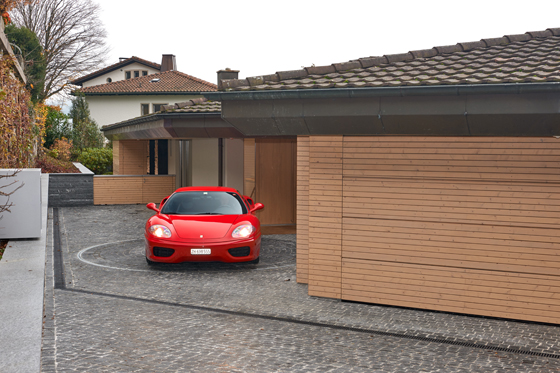
Turntable 505 is a showpiece of the product range: simply drive onto the circular, flush-mounted platform and be turned in either direction. This solution gives access even to ‘impossible’ parking spaces
×And Wöhr also has other specialities at the ready. The Parking Platforms, and especially the Turntable, may not have the spectacular sliding mechanics of Parksafe, but they are just as intelligently constructed and on-target in their problem-solving approach. Whenever only one direction of travel is possible, when there is insufficient space for turning manoeuvres, or if the client just wants an easier way in and out of a parking space, the Turntable offers a perfect solution. The user simply drives from his parking space onto the platform and waits as both he and the vehicle are rotated until he is able to drive away in the desired direction.
Similarly well conceived is the Parklift system combined with an underfloor garage for one to three vehicles on top of each other. The top plate of the car lift can be paved with the same surfacing as the surroundings and can be driven over. When closed, such a ‘garage’ is sunk into the ground, making it virtually invisible. In addition to all the engineering achievements embodied in these systems, architects will also appreciate the aesthetics and comfort they offer – relevant aspects that go beyond the predictable benefits or advantages and make a strong case in favour of installing a parking system. Historical, landmark-protected buildings and settings often rule out ordinary parking solutions, but discerning, contemporary architecture is also freeing itself of the classic garage door and considering alternative ‘storage possibilities and locations’ for private automobiles. Vertical lifts are not only capable of transporting a cherished vehicle beneath a flagstone terrace, they can also be used in special cases to carry it up into the living area – separated only by a pane of glass.
Parklift 462 underfloor garage for two vehicles. The small unit can even be installed in driveways and be driven over when closed

Parklift 462 underfloor garage for two vehicles. The small unit can even be installed in driveways and be driven over when closed
×A representative project that achieves high standards of comfort and safety despite confined parking space is the Hackesches Quartier development in Berlin. It was built recently on one of the last remaining pieces of choice real estate near the urban core, close to the Hackesche Höfe complex. Approximately 44,000 m² of gross floor area distributed over nine above-ground levels comprise mainly top-quality office areas, but also include a four-star apartment hotel that occupies nearly 7,700 m², as well as areas for retail stores and restaurants on the ground floor. The two blocks of buildings, which are separated by an alley and have strikingly varied and exciting facades, were built above a shared underground garage with 300 parking spaces. Of the total number of required spaces, executive architects Müller Reimann realised 76 with the Combilift 551 and Combilift 552 parking systems. The arrangement allows for parking in two rows and two levels with just one drive lane. A solution with regular underground parking spaces had proved unfeasible. The installed parking facility operates automatically when activated, and is secured by a code-key. A vehicle on the ‘upper level’ moves 2.10 metres per second, and 10 metres per second on the ‘ground level’ – which is surely fast enough for anyone who isn’t looking to leave the garage with a racing start at full speed.


